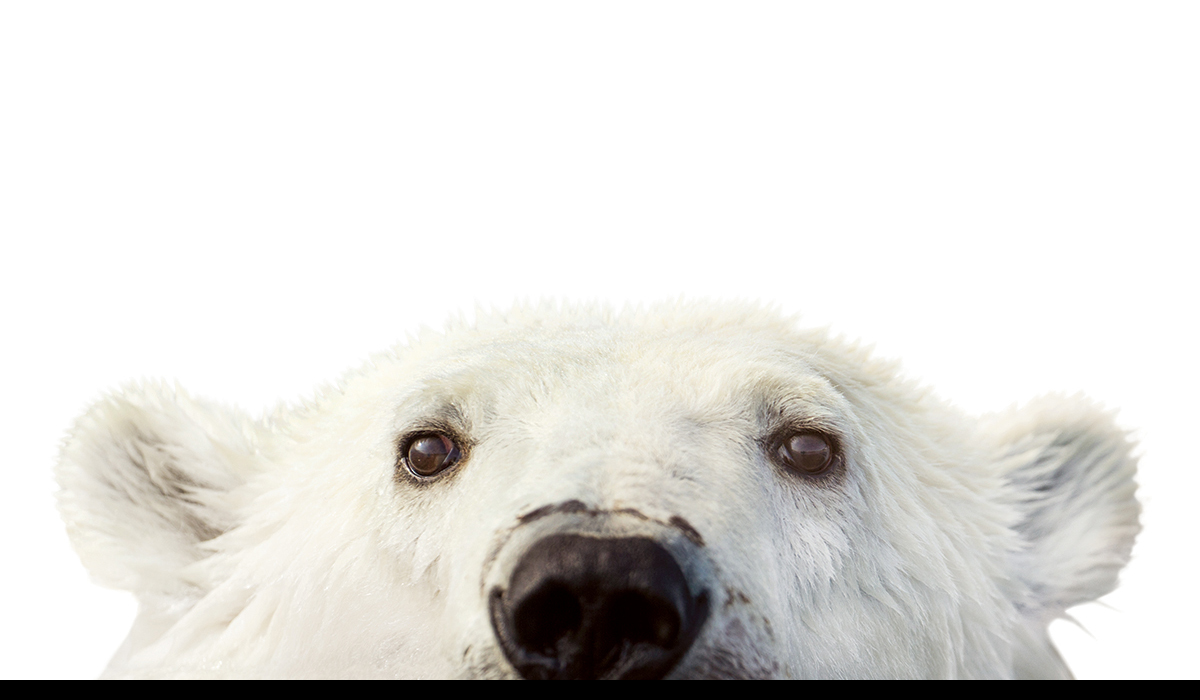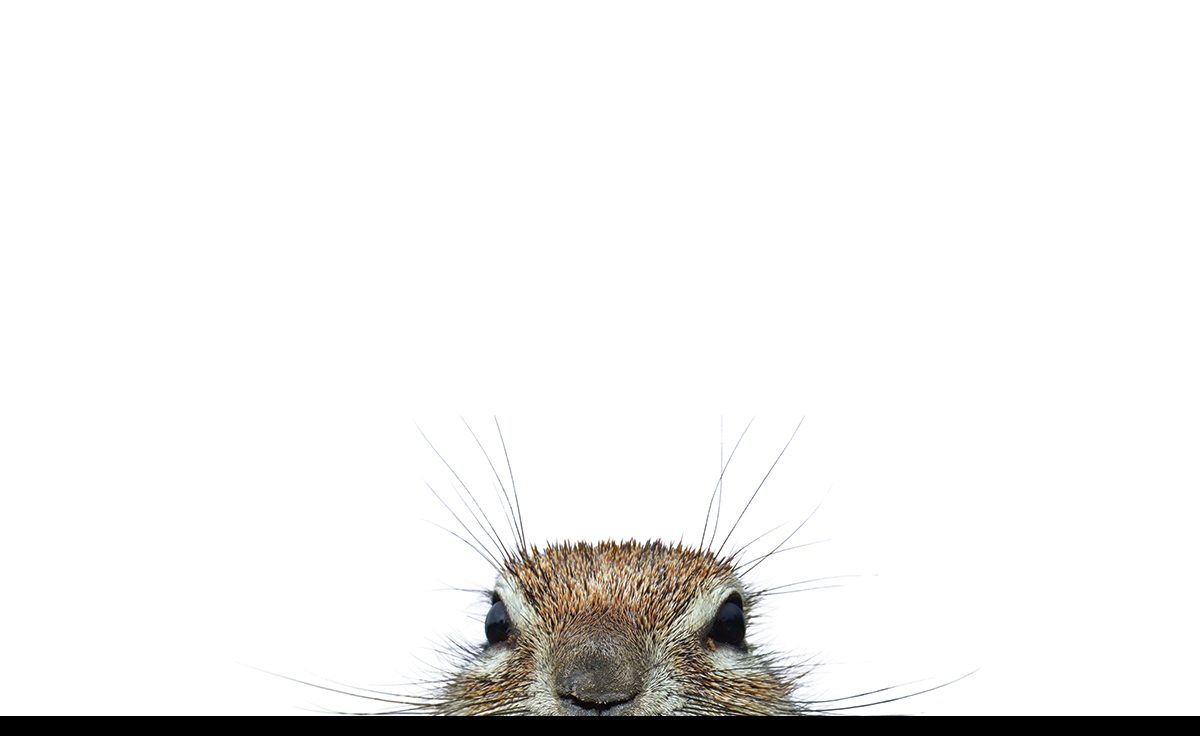Africa’s Namib Desert, probably the oldest desert in the world and certainly one of the driest, hides Earth’s richest deposit of diamonds, but two decades ago a family went there searching for something more valuable: tissue from the Mountain ground squirrel. Cinnamon-coloured, with a white belly and stripe running down its sides, it is indistinguishable from the Cape ground squirrel, save the colour of its teeth and an extra black band on individual tail hairs. The two squirrels were thought to be subspecies, but University of Manitoba biologists Jane Waterman and Jim Roth sought evidence among the sand dunes suggesting otherwise.
The husband and wife drove with their two young sons and nanny looking for squirrels to trap. Night was falling so they set up camp but didn’t account for thirsty bees and were quickly swarmed by a colony desperate for their water.
The parents dashed their 14-month-old and nanny to the tent, zipped it up, then shoved the three-year-old and as much gear as they could into the pickup truck “and drove like crazy.” Roth dropped them off at a new site and drove back for the others while Waterman started a fire for a special dinner. It was their wedding anniversary. “It was a different way to raise young kids, but, oh the adventures we had,” she says.
They got the samples, and mountain and Cape ground squirrels are now recognized as distinct species, Xerus princeps and X. inauris.
A Worthy Subject
Field biologists seek patterns in nature. It’s key for conservation, but it’s also artistic in a way: they toil and trek and wait and watch, sitting under blistering sun or freezing rain through a blur of time, because they are obsessed with gathering data that reveals a new picture of life. They want to uncover the wondrous behaviours and abilities and relationships natural selection creates. And there is no hierarchy of majesty in nature. So it confounds Waterman, a professor in the department of biological sciences for almost a decade, when people question the value of her main research subject: squirrels. Even renowned chimpanzee researcher Jane Goodall pondered it 20 years ago. Why squirrels?, she asked at the dinner party they attended. Why not the mongooses they live with? They’re smart.
“Generally, people appreciate animals that scare them and animals that they think are smart,” says Waterman. “People aren’t scared of dolphins but they think they’re cool because they’re smart. So they are sexy. People like polar bears because the bears can kill them.”
Waterman also studied polar bears for two decades. In particular, how they form amicable groups. Her Behavioural, Ecological and Evolutionary Research Lab investigates sociality’s evolution, costs and benefits. She even monitored how female hippopotamuses use their exhibit at Disney’s Animal Kingdom so zoos can design better naturalistic exhibits (the animals preferred water 0.6-1 metre deep). But she has spent most of her time with Cape ground squirrels.
She once ran three sites in Africa to compare how different habitats affect their behaviour, but now concentrates on one site 17 kilometres outside of Bloemhof, “a South African town most South Africans haven’t even heard of.”
The squirrels’ complex social structure is full of quirky behaviour—like when the biggest stud in the colony returns to mate, he moves in with his grandma for the week—and can reveal why mammals form social groups. For these squirrels, Waterman’s prolific research has ended the debate. They are social for the anti-predator benefits—probably a reason humans joined up too: More eyes watching for attacks means you’ll have a greater chance of surviving to reproduce.
She also discovered that squirrels are clever enough to eavesdrop, listening in to predator warning calls that mongooses and songbirds make. These animals, Watermen reckons, are indeed smart.
Like a Fox
Animal researchers get to know the minutiae of the kingdom in which they work. Take Arctic fox urine. It distinctly smells like wet dog and skunk to Jim Roth, a U of M biological sciences professor since 2008. This foul odour is how he knows an Arctic fox has been at a den in Wapusk National Park, east of Churchill, Man.
The remote town has international research appeal because of its three overlapping ecosystems: tundra, boreal forest and marine. In the summer, the verdant dens of these foxes, or Vulpes lagopus, stand out like neon signs on the dull landscape. They vary in size but can be as large as 900 square metres (about three tennis courts), and they hug the coast of Hudson Bay. Many are 100 years old, used and reused by different mating pairs and their usual litter of 10.
When Roth and graduate student Tazarve Gharajehdaghipour [MSc/16] set camera traps by the foxes’ dens to better understand litter size, they ended up capturing something altogether different: Many other species were coming to feed. Intrigued, they put cameras on the tundra and compared the data. They discovered caribou, Arctic hares, wolves, polar bears, ravens and gulls are all much more likely to frequent a den than the tundra.
Roth describes the foxes as ecosystem engineers who grow fertile gardens, made from their own organic waste and decomposed kills. These mounds produce a bounty of more nutritious and varied plants than the tundra. The pull for other species is so strong even mouse-like lemmings nest atop the dens come winter, within feet of their most feared predator. Why? The richer vegetation captures more snow, creating a better blanket, and it’s hard to sleep in the Arctic without a good blanket.
“Let the bear do the work and you clean up the leftovers. That’s cool.”
Roth was a graduate student in Minneapolis when a visiting professor lecturing on polar bears mentioned in passing that Arctic foxes follow polar bears around. “So I thought that was just a brilliant foraging strategy: Let the bear do the work and you clean up the leftovers. That’s cool.”
Roth read up and realized little was known about this behaviour, so he went to Churchill to investigate. One of his key findings: the fatter the polar bears, the more robust the Arctic fox population.
“Because when things are good on the ice, polar bears eat a lot and get really fat, and they leave a lot of food behind for the foxes. So the foxes chow down on seal remains. They eat a lot. They are in good condition. They have good reproductive success. And then they crank out a lot of off spring. So resources out on the sea ice are affecting Arctic fox populations, which I think is pretty cool. But now, the extent of sea ice is decreasing. The duration is decreasing. Polar bears are not in as good a condition as they were 20 years ago, and we are finding a decrease in the fox population.”
A little bird told me
Kevin Fraser can tell you where, exactly, some of the most famed songbirds like the purple martin go for their winter vacation.
As a post-doc, he was one of the first to attach microchips onto the backs of migrating songbirds that measure the precise timing of sunlight and ultimately reveal the birds’ latitude and longitude. Today, his Avian Behaviour and Conservation Lab at the U of M continues this work and uncovers unexpected twists in behaviour, like what the smartphone-sized purple martins did in May 2016.
Manitoba was suffering a cold snap. Progne subis, the largest of the North American swallows, draped in their regal hues of shiny purple and black, were half done their migration and those still flying up hit this cold front over Iowa. So they turned around and went to Texas for a few days.
“This was surprising. There’s a bit of evidence that birds can do reverse migration but I don’t think many people thought they would go back a thousand kilometres. That shows a huge amount of flexibility, at least related to cold,” the assistant professor says. “This was good news. I thought they were pretty inflexible in their timing, but the fact they can reverse migrate and survive to breed another year by doing that is pretty encouraging.”
The latest GPS models can report on a bird’s whereabouts to within 10 metres. That’s how Fraser knew exactly where to find them on the Amazon River.
“It wasn’t our normal jungle trek. We were on a two-storey Amazon boat, putting up the river looking for martins we’d located with the tracking data. And we came to these islands, which are actually a really rare habitat there. They are under water most of the year and covered with gnarled trees that look kind of elfin. These were their roosting sites and we wouldn’t have known this without going out there. It turns out, a new hydro-electric development may flood some of these islands permanently and conservation groups were looking for justification to save them.”
Score one for conservationists.

photo by Paul Souders
Migrating songbirds like the purple martin may be slow to adapt to climate change unless humans help. One reason: When they overwinter 10,000 kilometres south of Canada— in Brazil—they don’t receive cues if spring arrives weeks earlier here, which happened in 2012, the warmest spring on record. Martins arrived at their usual time, likely missing the peak abundance of flying insects, their primary food, which came out early.
“Otherwise, we have to wait for them to evolve, which could take a very long time, like, 300 years.”
Fraser, who watches video feeds of purple martin nests from his office, is starting a project to see if birds can keep pace with climate change, or be coaxed to adjust. There is an idea that the day length a chick experiences while in the nest triggers a genetically preloaded flight itinerary. Among other things, Fraser wonders if birds could be given new itineraries through captive rearing programs that trick them with alternative light cues (an artificial sun, if you will).
Fraser hopes such interventions can help birds quickly adapt. “Otherwise, we have to wait for them to evolve, which could take a very long time, like, 300 years.”
Fright and Flight
Field research in remote regions lacks glamour. There are venomous snakes and oppressive heat in the Amazon, biting insects and chilling rain everywhere, and of course that mob of thirsty African bees, still vivid for Roth and Waterman decades later. Invariably, the observer will experience discomfort and, sometimes, danger.
“I started working up in Churchill before safety was invented,” Roth says. “Now we are veeeery safety conscious. We’re very careful. I used to think data was more important than safety, but now I realize it’s the other way around. Safety first, then data, then comfort, in that order. You shouldn’t write that. I’m going to get in trouble.”
Roth remembers well when his ATV broke down on the tundra one August evening in 1994. He radioed a passing research plane but his radio would only transmit, not receive, so he didn’t know if they heard him.
Roth knew bears were around even if he couldn’t see them. “They always seem to hide in willows. It’s amazing how these huge bears can become invisible.”
He hurried to a nearby outpost that was closed for the season.
“And I get to this place and the door to the building is broken open and there are big greasy footprints leading into this open door. And I don’t know if there is anything in there still or not, so I climb a ladder, and I say, ‘Okay, I’m on the roof. It’s dark. I guess I’m going to be here all night long.’ Then I heard a helicopter’s tst-tst-tst-tst coming. And so I got out my little flashlight I always carry with me and shone it up. And it was Jane.”
Roth threw his shotgun and pack in the helicopter. Waterman just looked at him and said, “You’re late for dinner.”







